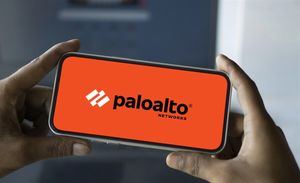
A seismic shift is quietly underway across the American business landscape. Over half of privately held businesses with employees are owned by individuals over the age of 55. As these business owners retire en masse—a trend dubbed the “Silver Tsunami”—a staggering number of small to midsize businesses face uncertain futures.
Many lack succession plans. Some will quietly close. Others will be sold to out-of-area buyers or private equity firms, often resulting in layoffs, community disinvestment and further concentration of wealth in the upper few.
But there’s a powerful, underutilized alternative: broad-based employee ownership (EO). For impact investors looking to preserve local economies, build worker wealth and strengthen business resilience, EO presents both a social imperative and a savvy investment strategy.
What is employee ownership?
Broad-based employee ownership gives workers across all levels of a company the opportunity to become employee-owners. Unlike executive stock options, broad-based EO models distribute ownership equitably among employees.
There are three common types:
- Employee stock ownership plans (ESOPs): The most prevalent EO model in the U.S., ESOPs are retirement plans that hold shares in trust on behalf of employees. Workers don’t buy in with their own money, and they build retirement assets over time as the business grows.
- Worker cooperatives: These businesses are wholly owned and governed by the workers, with democratic voting rights and shared profits. Every employee typically gets one vote, creating both ownership and voice.
- Employee ownership trusts (EOTs): A newer model in the U.S. (well-established in the UK), EOTs hold the business in perpetual trust on behalf of employees. EOTs can incorporate profit-sharing and participatory governance, while offering more flexibility than ESOPs or coops.
Why employee ownership?
The benefits of EO are profound — especially for workers, businesses and local economies:
- Wealth-building for workers: In EO companies, even employees in lower-income sectors accumulate significantly more wealth. According to an NCEO study, the median household net wealth can be 92% higher compared to peers in non-EO firms.
- Better jobs: EO firms often offer stronger benefits, including health coverage and retirement plans. They also invest more in training and internal advancement.
- Resilience: Studies show EO companies are more likely to survive economic downturns. During the COVID-19 pandemic, for instance, EO businesses preserved more jobs and rebounded faster.
- Attracting and retaining talent: In a tight labor market, EO is a powerful differentiator. Ownership stakes foster a sense of purpose and loyalty, making it easier to retain talent.
- Preserving local ownership: EO prevents the gutting of community businesses by allowing companies to stay locally owned — even as founders exit.
Transitioning to employee ownership
As exiting business owners evaluate succession plans, they can consider selling to their employees instead of selling to an outside buyer or closing down. When transitioning their business to EO, business owners are able to:
- Preserve their legacy
- Get market value for their business
- Potentially get tax advantages (depending on the EO type)
- Retain their employees
For more information about transitioning to EO, check out Project Equity’s end-to-end, consultative transition services. Whether EO exploration services, partial exits, full exits, transition capital or post-transition support, Project Equity offers business owners a spectrum of possibilities to meet their goals.
How impact investors can get involved
Despite its benefits, one of the biggest barriers to EO adoption is access to capital. Most EO transitions involve leveraged buyouts where companies purchase the business from the exiting owners. This is where impact investors come in.
An emerging ecosystem of banks, CDFIs, impact investing funds and technical assistance providers is helping to close these deals. If you’re ready to invest, start with our EO Catalyst Fund, Transform Finance’s database of EO funds and the Transformative 25 list—a curated guide to funds investing in economic justice and systemic change.
Now is the time to act
As thousands of baby boomer business owners prepare to exit, we face a once-in-a-generation opportunity to reshape who owns — and benefits from — America’s businesses. For impact investors and business owners, employee ownership isn’t just a mission-aligned strategy. It’s a smart bet on stable returns, resilient companies and equitable outcomes — and one that is less extractive than other investing opportunities.
Read more: Here’s how long it will take AI to eliminate your job






